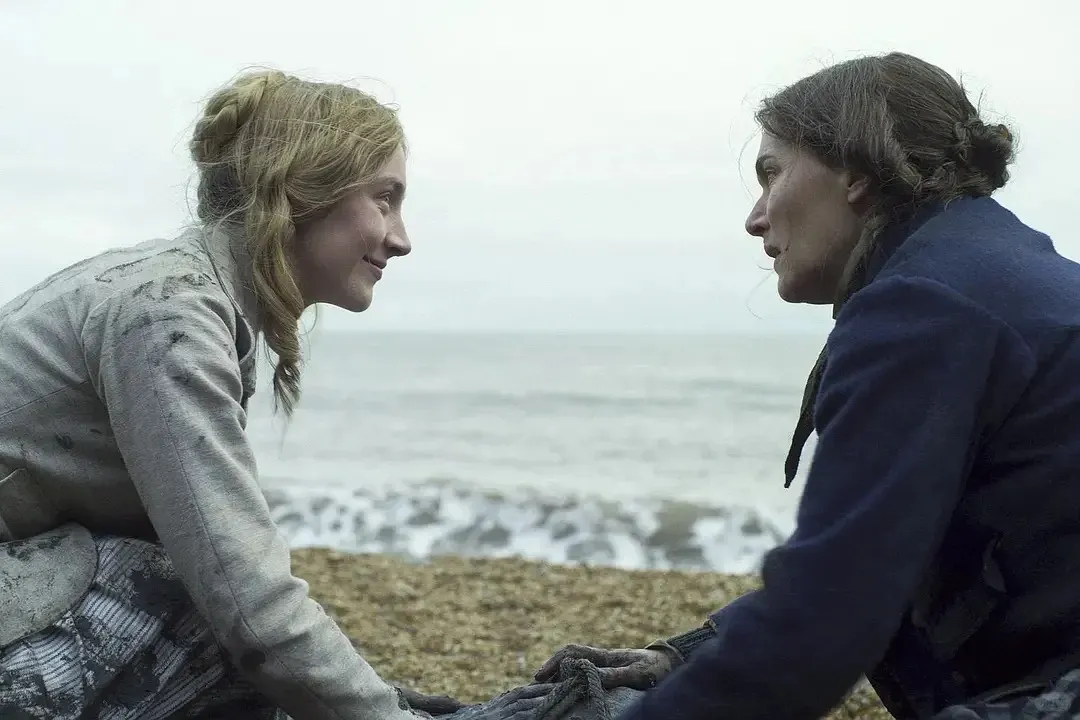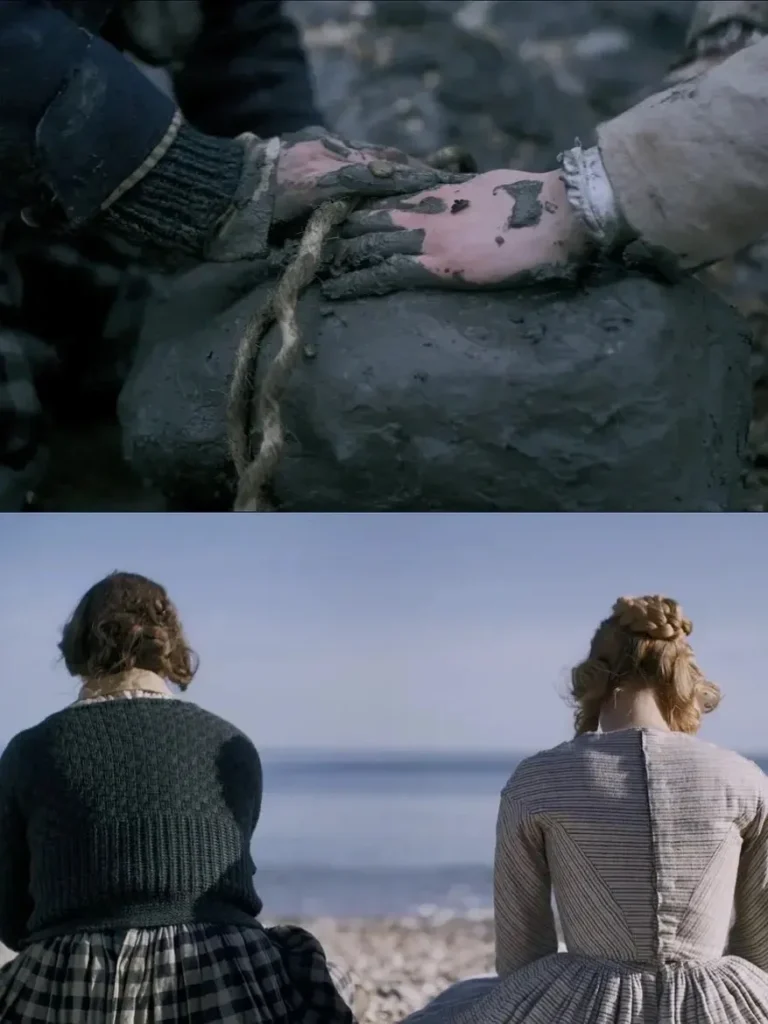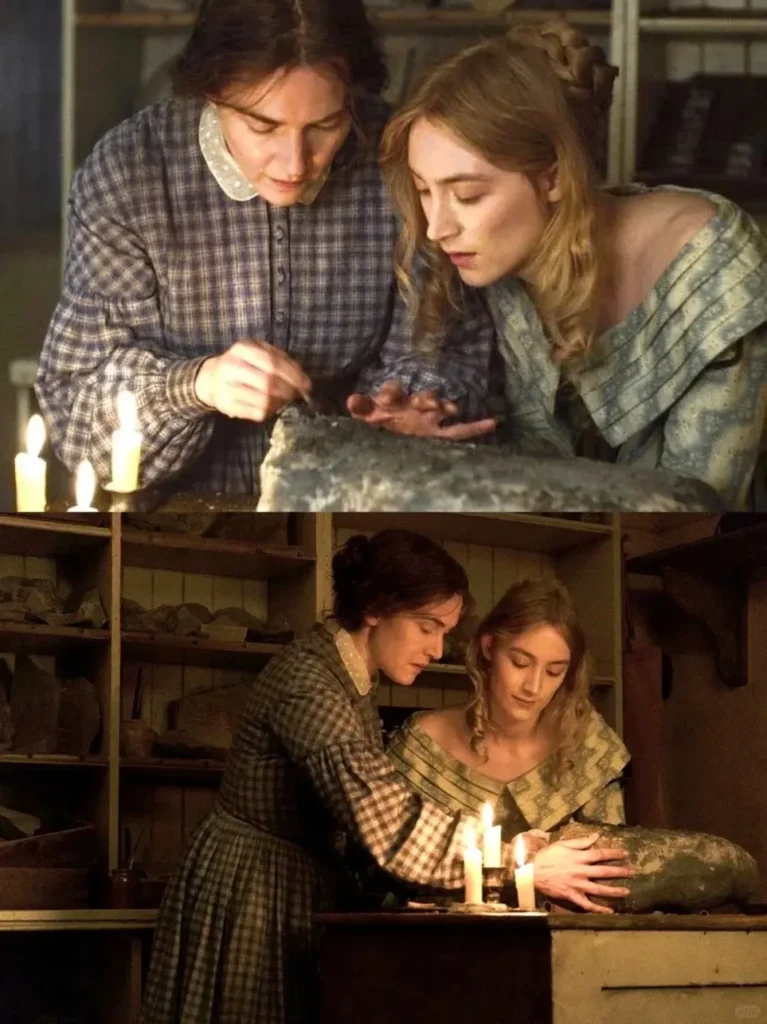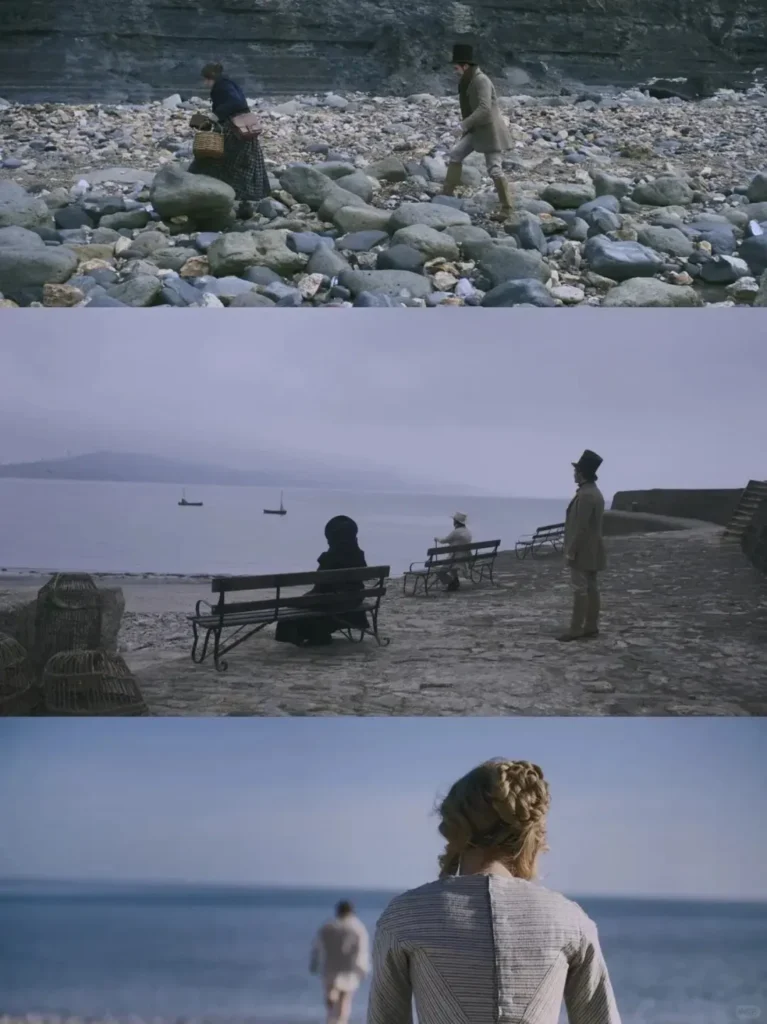
Mary Anning, a working-class paleontologist living in poverty on the southern coast of England, spends her days scavenging fossils to support her ailing mother. Despite her groundbreaking discoveries, her contributions are dismissed by the male-dominated scientific world. One day, a wealthy gentleman, Roderick Murchison, asks Mary to care for his melancholic wife, Charlotte, while he travels.

Though reluctant, Mary accepts for the money. Initially cold and distant, the two women gradually warm to each other as Charlotte begins to recover. What begins as companionship grows into an unexpected romance. Their intimacy gives Mary a glimpse of joy she rarely allows herself, while Charlotte finds freedom and passion outside her oppressive marriage.
But their worlds—one marked by privilege and social status, the other by labor and marginalization—cannot easily coexist. When Charlotte’s husband returns, the fragile balance is shattered. Mary visits London, only to realize she has been offered not love, but a gilded cage. Their silent confrontation in the museum, divided by glass, becomes the symbolic end of a fleeting yet transformative love affair.
Ammonite Cast
Charactor

Mary is a fossil hunter and paleontologist whose discoveries shaped evolutionary science but were ignored in her lifetime. In the film, she is depicted as a solitary, weathered woman hardened by poverty.
Kate Winslet
Kate Winslet, known for Titanic and The Reader, delivers one of her most unglamorous yet powerful performances. She embodies Mary’s resilience, bitterness, and vulnerability with an intensity that lingers long after the film ends.

Charlotte is the delicate wife of a wealthy gentleman, suffering from grief and depression. Sent to convalesce by the sea, she discovers passion and companionship with Mary.
Saoirse Ronan
Saoirse Ronan (Brooklyn, Lady Bird, Little Women) brings youthful fragility and understated boldness to Charlotte. Her portrayal captures both the naivety of privilege and the hunger for emotional freedom.
Director

Francis Lee
Francis Lee is an English filmmaker who made his feature debut with God’s Own Country (2017), a gay romance set in rural Yorkshire that received international acclaim. His work is known for its earthy realism, sparse dialogue, and focus on working-class characters. With Ammonite (2020), Lee turned his lens to women’s history, crafting a story that critiques class and gender oppression while reimagining Mary Anning’s life through the lens of queer love. Though divisive, his style—harsh, unembellished, yet deeply humane—has made him one of Britain’s most distinctive queer directors.
BEST SCENES
📍 The seaside bathing sequence is unforgettable. For a rare moment, Mary laughs—her rigid face softening into joy—as Charlotte splashes in the waves. It’s a fleeting image of freedom, sunlight breaking through the bleakness. Later, their intimacy in Mary’s modest home is tender yet raw, contrasting starkly with Charlotte’s ornamental life. These moments embody what the relationship meant: temporary warmth in a world defined by coldness.
Ammonite Review
Review





⭐ Story (3.5/5)
The narrative is sparse and restrained, focusing less on plot twists and more on character study. Through fossil hunting, class boundaries, and a brief but consuming romance, it portrays love as both a refuge and an illusion. For some, the emotional distance feels frustrating; for others, it reflects the impossibility of sustaining intimacy across such social divides.
⭐ Acting (4.5/5)
Kate Winslet brings raw gravitas to Mary Anning: stoic, wounded, and fiercely proud of her work. Saoirse Ronan’s Charlotte contrasts with delicate vulnerability, tinged with privilege. Together, their performances embody two women whose connection is as much about loneliness as desire.
⭐ Chemistry (3.5/5)
The film sparked debates: some felt the intimacy lacked chemistry, others saw it as authentically awkward—two women discovering freedom in each other for a brief time. Rather than fiery romance, it offers something quieter, almost spectral.
⭐ Production (4/5)
Francis Lee directs with the same earthy austerity as his previous film God’s Own Country. The muted palette, harsh seaside winds, and near-silent interiors create a tactile realism. Sparse dialogue, minimal music, and raw sound design (waves, footsteps, tools scraping fossils) ground the atmosphere. Some find it too bleak, but it powerfully resists romanticization.
⭐ Ending (4/5)
The museum scene is devastating in its restraint. Mary realizes Charlotte will never truly understand her life’s work or sacrifice. Their silent gaze across the ammonite fossil, once theirs, now encased and labeled under another man’s name, encapsulates the futility of their love. It is not a tragic melodrama, but a quiet acknowledgement that some bonds remain unfinished.
💬 My Take
For me, Ammonite is less about a grand romance and more about a fleeting illusion—two lonely souls colliding, briefly lighting each other’s lives before drifting apart. The fossil metaphor is piercing: love, like ammonites, can be preserved in stone but not in time.
Many critics complained about lack of chemistry, but I felt its truth lay precisely in that dissonance. They weren’t soulmates—they were two women trapped by class, gender, and circumstance, trying to breathe warmth into each other’s cold realities. It’s a film about isolation, desire, and the impossibility of full understanding. That’s why I found it hauntingly real.
Ammonite Information
Awards & Recognition 🏆
73rd Cannes Film Festival (2020) – Official Selection (Directors’ Fortnight)
74th British Academy Film Awards (BAFTA, 2021) – Nominated for Best Costume Design (Michael O’Connor)
34th European Film Awards (2021) – Nominated for Best Costume Design (Michael O’Connor)
